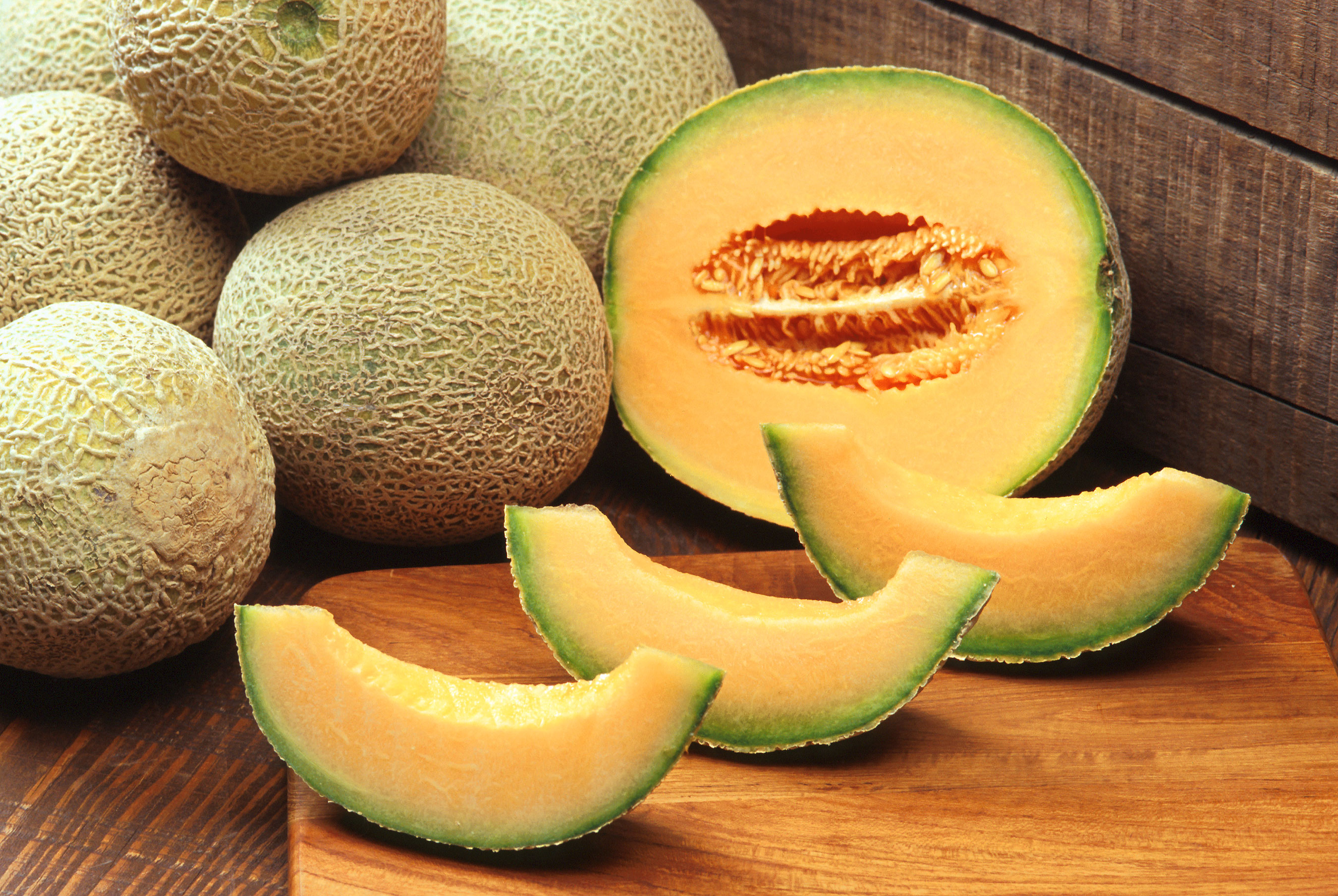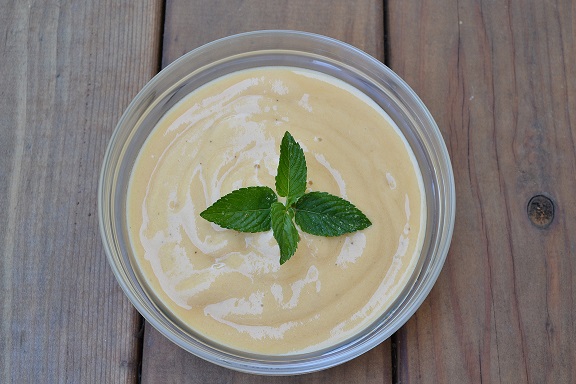I am a huge fan of education. This makes sense, given that I teach a class called the Science of Raw Food Nutrition, read lots of research articles, and write quite a bit on the subject of raw food. So, it likely comes as no surprise that I often encounter misperceptions about raw food topics, especially from people eating a standard western diet and even from people eating a raw plant-based diet. Often times these misunderstandings are based on one’s particular personal experience.
Here is a great example:
Last week, Rick and I purchased two 35# cases of cantaloupe at our local organic wholesale produce market for under $10 each; an amazing deal for such a large amount of food. I spoke to a relative about our recent find and their response was along the lines of: “How on earth are you two going to eat all of that and why would you want to since fruit doesn’t have much nutrition anyway?” This observation brings up a couple of interesting points of how fruit is generally perceived.
Perception #1: Too much fruit
Before I became interested in raw food 25 years ago, I thought of fruit as being a dessert, condiment, or decoration for the top of my cereal. I did not particularly like fruit when growing up because invariably I would get an upset stomach almost every time I ate it, which was enough to keep me away. When I learned about raw food diets that included a notable amount of fruit, my initial thought was eating this way is not possible, given how I felt after eating even small amounts. At the time, I was looking for a solution to a health challenge, so I was willing to explore my options. If it weren’t for this health challenge I would not have been inspired to make such large changes to my diet. I reluctantly gave eating more fruit a try and was surprised at how good I felt. What was the difference? Placebo? Was I so desperate to feel better that I wished myself into feeling better after eating fruit? Well, not really. I was hoping that raw food would not make a difference in my health because it seemed so different from the norm, or more specifically my norm. Raw food eating may seem a bit eccentric to most people now, but imagine how it was perceived back in 1990 when I was getting started. Much to my chagrin, raw food did make a big difference for me health-wise and my perception of it was radically changed. My attitude changed to gratitude with the health results I experienced.
So, why did fruit work for me digestion-wise when previously it had not? I’m sure that many of you can guess the answer. The fact is, before going raw I was eating fruit either as a dessert or on top of other heavier foods, and that did not work well for my digestion. From my own personal experience, the principle of eating fruits away from other foods for improved digestion has worked well. In fact, this aspect of food combining was really a revelation, since I was actually able to start enjoying fruit without digestive distress for the first time in my life. Fruit is no longer a dessert, instead it now plays an important role in my diet. In my book, the Raw Food Nutrition Handbook: An Essential Guide to Understanding Raw Food Diets, I give an updated perspective on the topic of food combining based on reliable research and digestive physiology.
Perception #2: Fruit is low in nutrients
Another misperception is that fruit doesn’t have very much of any important nutrients, other than carbohydrates. I can understand this thought, because when one considers how much fruit the average person eats in one sitting, it is usually a small amount accompanying other foods as it was for me. The amount of fruit I have seen raw food enthusiasts eat in one sitting, especially the very active ones, is often inconceivable to most standard western eaters or even many health conscious people. When one sees fruit as being a meal rather than a dessert or condiment, then the nutrients one can get from fruit increase as portion sizes increase. For example, here is a sampling of the nutrients found in one medium-sized cantaloupe:
| Cantaloupe, one medium, 552 g | Adult DRI | |
| Calories | 188 | |
| Beta carotene (mcg) | 11,150 | |
| Vitamin A (RAE – Retinol Activity Equivalent) | 933 | 700 mcg for women, 900 mcg for men |
| Vitamin B3 (Niacin) (mg) | 4.1 | 14 mg for women, 16 mg for men |
| Vitamin B9 (Folate) (mcg) | 116 | 400 mg for men and women |
| Calcium (mg) | 50 | 1000 mg for women up to and including 50 years and men up to and including 70 years, 1200 mg for women over 50 and men over 70 |
| Iron (mg) | 1.2 | 8 mg for men and postmenopausal women, 18 mg for premenopausal women |
| Magnesium (mg) | 66 | 310 – 320 mg for women, 400 – 420 mg for men |
| Zinc (mg) | 1.0 | 8 mg for women, 11 mg for men |
Rick and I each easily eat this amount of cantaloupe in one sitting, often with other fruit added. When eaten in quantity, fruit can be a strong source of many important nutrients. As we see here, cantaloupe is a great source of beta-carotene as exemplified by its rich orange color. How much of this beta-carotene is converted to vitamin A? Check out my video for an explanation. The calcium, iron, and zinc content of cantaloupe is surprising. How many times have I heard people say that fruit is low in minerals? Often times this may be true, but the reality is that it depends on the fruit and how much one is eating. I have some good videos on this topic, as well.
Regarding the consumption of cantaloupe and other melons, do I “eat them alone or leave them alone” as espoused by food combining adherents? No, I often eat cantaloupe in smoothies with other fruits and even leafy greens. My digestion is just fine. The most important point to remember with food combining principles is that they are a good starting point, and not necessarily to be taken as dogma. From these guidelines one can determine which works best for them personally. While I don’t follow all of the principles, I am happy that they do exist because without them, I might still be thinking of fruit as a dessert and unnecessarily avoiding it.
Here is a surprisingly flavorful and simple recipe that I recently made with cantaloupe from our produce haul:
Simple Cantaloupe Banana Smoothie
Flesh of one medium cantaloupe
Approximately three medium frozen bananas, cut into pieces
Scoop the cantaloupe flesh into a blender and blend until smooth. Then add the bananas and blend again until smooth and thick. More bananas will result in a thicker smoothie.
Pour into a glass or bowl and optionally garnish with mint.
Enjoy!
One of the best ways to keep in touch with us is to join our email list. You’ll receive a free copy of Our Top 12 Strategies for Long Term Success on A Raw Plant-Based Diet eBook along with regular information about raw food and plant-based diets and periodic promotions for our classes, events, and other offerings!
3 thoughts on “How I Went From Avoiding Fruit to Loving It – The Food Combining Difference”
Comments are closed.



Thanks so much for this. Reclaiming fruit! The idea of combining banana plus melon seems counter-intuitive, but your blend looks light, creamy and delicious! I like my cantaloupe simply in chunks with blueberries for the amazing colour contrast.
You're welcome Sunny. It is always fun to find new combinations of fruit that are flavorful, nutritious, and digest well.
Great article Karin! Thank you for all of this information. I eat a lot of fruit (for example: 6-8 oranges, 3-4 apples, between 6 and 11 am, as my breakfast), big salads, lots of dark greens, and am 75% raw. People say to me all the time, when they see the fruit that I eat, "Oh wow, that is a lot of sugar!" What is an informed response to this statement?